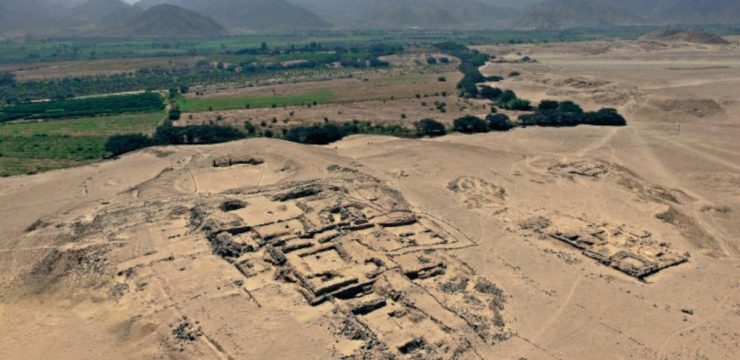Archaeologists made an extraordinary discovery in the frozen Siberian tundra of Russia when they unearthed mummies adorned with elaborate and beautifully preserved tattoos. These mummified remains belonged to the Pazyryk people, an ancient nomadic tribe that thrived during the Iron Age, roughly between 600 and 300 BC. Experts believe these tattoos may have served several purposes, ranging from personal identification within the tribe to spiritual markers that might help others recognize them in the afterlife. The level of intricacy in these tattoos is astonishing, particularly when one considers the limited tools and technology available in those ancient times. The artistry and purpose behind these designs offer a window into a rich cultural and spiritual world that has captivated both scientists and the public alike.

The Pazyryk people lived in the Altai Mountains, located in southern Siberia, near what is now the Russian city of Novosibirsk. They were a nomadic group who relied heavily on horses for transportation, which enabled them to travel long distances and engage in trade with regions as far-reaching as China, India, and Persia. The Pazyryks are known not only for their distinctive tattoos but also for their exceptional burial practices and the remarkably preserved artifacts discovered within their tombs. These burial chambers, or kurgans, were filled with items that shed light on the daily life and customs of the tribe. Archaeologists found felt hangings, fine Chinese silk, pile carpets, carved wooden furniture, household goods, and even a fur pouch containing cannabis seeds. Other items included an incense burner filled with stones and a frame used for inhalation therapy, likely as part of ceremonial or medicinal rituals. The state of preservation of both human remains and artifacts is attributed to the unique climatic conditions—water had seeped into the tombs and subsequently froze, encasing everything in solid ice for more than two millennia.
Among the most remarkable finds was the body of a man believed to have been a Pazyryk chief. Thought to be around 50 years old at the time of his death, this man had a robust build, suggesting a life of physical strength and possibly leadership. Portions of his body remained intact, and the tattoos on his skin were clearly visible. Scholars suggest these tattoos were applied using fine needles, possibly the same ones used for embroidery, a skill for which the Pazyryk people were known. The designs that adorned his body included a fascinating array of animals—many of which were interwoven in complex arrangements. These included a donkey, a mountain ram, two deer with expansive antlers, a mysterious carnivore etched into his right arm, two griffin-like creatures, three heavily damaged figures believed to be a pair of deer and a mountain goat, a fish, a mythical beast, and four rams. In addition to these elaborate images, the chief had several small, circular tattoos along his spine, which researchers believe may have served a medicinal or therapeutic purpose, possibly similar to ancient acupuncture or pressure point practices.
Equally mesmerizing is the discovery of another set of remains, famously known as the Ice Maiden or Princess Ukok. Her mummy has gained considerable attention worldwide and has become a symbol of ancient Siberian culture. The Ice Maiden was buried in a wooden chamber along with six horses, a sign of her elevated status within the Pazyryk tribe. Although her head was shaved, she wore a wig and an ornate headdress, reflecting the ceremonial nature of her burial. Her body was also adorned with tattoos similar in style and complexity to those of the Pazyryk chief. The tattoos featured various animals and mythical creatures, likely symbolizing her societal role, spiritual beliefs, or even protective charms. These ancient designs are among the most intricate known from that period, and they have inspired many modern tattoo enthusiasts who replicate them as a tribute to this fascinating culture.
The revival of these ancient tattoo designs in modern times is a testament to their visual appeal and mysterious allure. Tattoo artists and cultural history buffs alike have marveled at the technical skill it must have taken to produce such fine and lasting body art. These 2,500-year-old patterns are now inked on people all over the world, blending ancient heritage with contemporary identity.
However, the discovery and public display of the Ice Maiden’s remains have stirred controversy, particularly among local Siberian communities. Some view the exhibition of her nude body as deeply disrespectful, arguing that regardless of how long ago she lived, her remains deserve privacy and reverence. In fact, many indigenous villagers have called for her reburial. They believe that the Ice Maiden’s body was intentionally positioned to block entry into the realm of the dead and that removing her has disrupted a spiritual balance. Some even blame recent natural disasters—such as floods and earthquakes—on the disturbance of her tomb, claiming these events are signs of her displeasure and unrest. This perspective has sparked debates over ethical considerations in archaeology, especially concerning the treatment of ancient human remains and the respect due to indigenous beliefs and traditions.
Despite the differing opinions on how these remains should be handled, the Ice Maiden and the Pazyryk chief have given modern scientists and historians an invaluable glimpse into an ancient culture that was far more complex and sophisticated than previously imagined. The Pazyryk people were not merely nomadic horsemen; they were skilled artisans, spiritual thinkers, and cultural contributors whose practices challenge our understanding of prehistoric human development. Their burial customs, artistic achievements, and even their use of cannabis for ritual or medicinal purposes all suggest a nuanced way of life rich with symbolism and meaning.
The true purpose behind the tattoos remains a matter of speculation. Were they meant to signify status? Offer protection? Connect the wearer with the divine or with nature? Or perhaps they served as a means of storytelling or preserving historical memory. While researchers continue to examine the remains and study the associated artifacts, there is still much we may never know. The artistry is evident, and the craftsmanship is undeniable—but the ancient intentions behind these stunning tattoos might remain hidden forever.
Nonetheless, these discoveries continue to fascinate the modern world. They connect us with a time long past and remind us that beauty, identity, and spiritual expression are not modern inventions. The Pazyryk tribe, through their remarkable tattoos and preserved remains, speak to us across centuries, offering a silent but powerful testament to the creativity and depth of ancient human life. As we continue to uncover more secrets from beneath the frozen earth, each new find enriches our understanding of history, humanity, and the enduring power of art.





